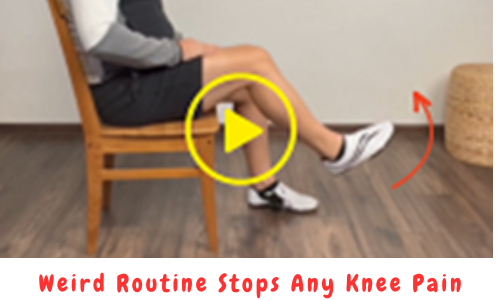To stretch your quads, stand next to a chair or a wall for support. Bend your right knee and bring your right heel toward your buttocks. Grab your right ankle with your right hand and gently pull it closer to your body. Keep your knees together and your hips forward. You should feel a stretch in the front of your right thigh. Hold for 20 to 30 seconds and then switch sides.
Knee pain is one of the most common complaints among people of all ages and fitness levels. It can affect your daily activities, your mood, and your quality of life. Knee pain can have many causes, such as injury, arthritis, overuse, or poor alignment. But whatever the reason, there is something you can do to relieve your pain and prevent it from getting worse: corrective exercises.
Corrective exercises are specific movements that target the muscles, tendons, ligaments, and joints that support your knees. They help to improve your posture, balance, flexibility, and strength. They also help to correct any imbalances or weaknesses that may be contributing to your knee pain. By doing corrective exercises regularly, you can reduce inflammation, increase blood flow, and promote healing in your knees.
The best part is that you don’t need any fancy equipment or a gym membership to do corrective exercises. You can do them anywhere, anytime, with just your body weight or some simple props. In this article, we will show you some of the most effective corrective exercises for knee pain that you can do anywhere. All you need is a mat, a chair, a towel, and a resistance band.
Before you start, make sure to warm up your muscles with some light cardio or dynamic stretches. Also, remember to listen to your body and stop if you feel any sharp or severe pain. You can modify the exercises to suit your level of comfort and ability. Aim to do these exercises at least three times a week for optimal results.
1. Quad Stretch
The quadriceps are the large muscles in the front of your thighs that help you straighten your legs. They can get tight from sitting for long periods or doing activities like running or cycling. Tight quads can pull on your kneecaps and cause pain and inflammation.
2. Hamstring Stretch
The hamstrings are the muscles in the back of your thighs that help you bend your knees. They can get tight from sitting for long periods or doing activities like sprinting or jumping. Tight hamstrings can limit your range of motion and put extra stress on your knees.
3. Glute Bridge
The glutes are the muscles in your buttocks that help you extend your hips and stabilize your pelvis. They can get weak from sitting for long periods or doing activities that don’t engage them enough. Weak glutes can cause your hips to rotate inward and affect the alignment of your knees.
To stretch your hamstrings, sit on the edge of a chair with your right leg extended in front of you and your left leg bent. Place a towel around the ball of your right foot and hold both ends with your hands. Keep your back straight and lean forward from your hips until you feel a stretch in the back of your right thigh. Hold for 20 to 30 seconds and then switch sides.
To strengthen your glutes, lie on your back on a mat with your knees bent and your feet flat on the floor. Place a resistance band around your thighs just above your knees. Squeeze your glutes and lift your hips off the floor until you form a straight line from your shoulders to your knees. Press out against the band as you lift. Hold for two seconds and then lower back down. Repeat 15 to 20 times.
4. Clamshell
The clamshell is another exercise that targets the glutes, especially the gluteus medius, which is the muscle on the side of your hip that helps you move your leg out to the side. This muscle is important for keeping your knees in line with your toes when you walk, run, or squat.
To do the clamshell, lie on your right side on a mat with your knees bent at 90 degrees and stacked on top of each other. Place a resistance band around your thighs just above your knees. Keep your feet together and lift your left knee up as high as you can without moving your hips or pelvis. You should feel a squeeze in your left glute. Hold for two seconds and then lower back down. Repeat 15 to 20 times and then switch sides.
5. Straight Leg Raise
The straight leg raise is an exercise that works on the quadriceps and the hip flexors, which are the muscles in the front of your hips that help you lift your legs. These muscles are important for supporting your knees and preventing them from buckling or collapsing inward.
To do the straight leg raise, lie on your back on a mat with your right leg bent and your left leg straight. Tighten your left quad and lift your left leg up to the same height as your right knee. Keep your left leg straight and your toes pointed up. Hold for two seconds and then lower back down. Repeat 15 to 20 times and then switch sides.
These are some of the most effective corrective exercises for knee pain that you can do anywhere. By doing them regularly, you can improve your knee function, reduce your pain, and prevent further injury. Remember to consult your doctor before starting any new exercise program, especially if you have a history of knee problems or other medical conditions.
